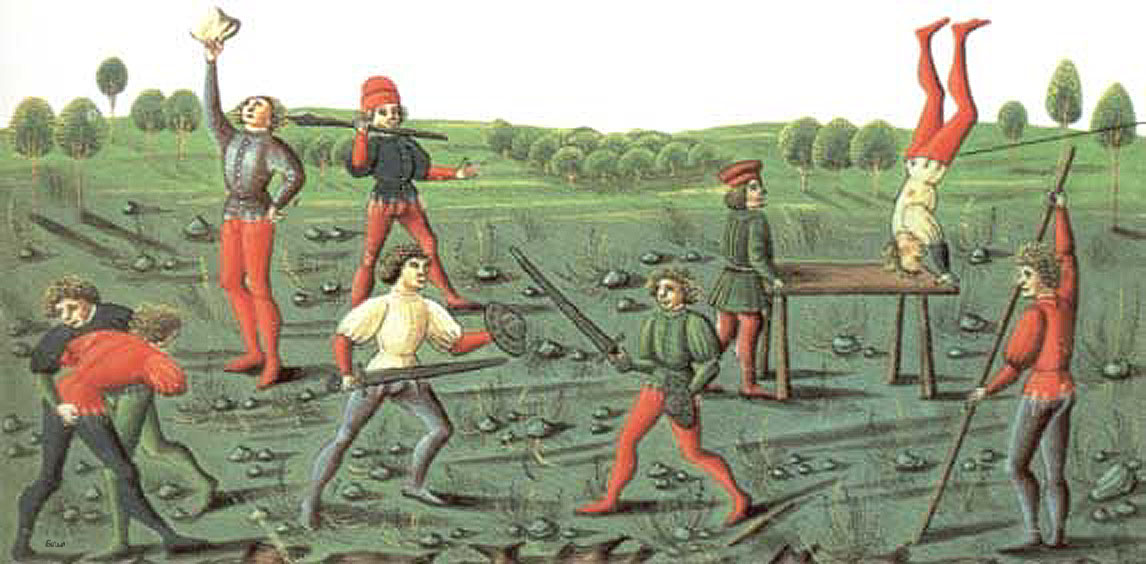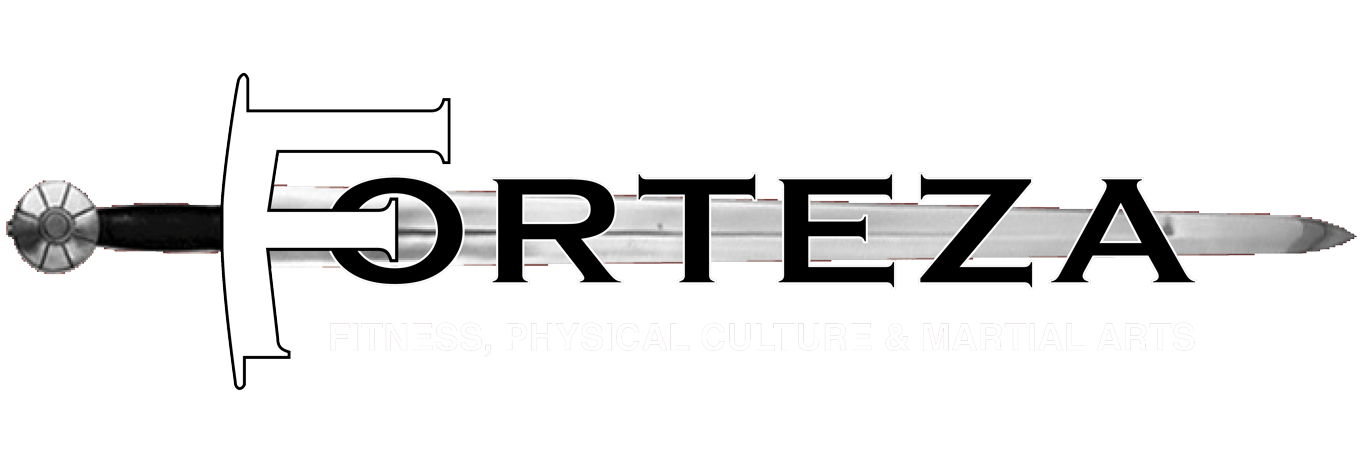How “Old School” is Old School? Personal training for fitness – and survival – in the 15th century

Sweating to the Oldies, 15th Century-style: Fencing, weight-lifting, stone-throwing, wrestling and tumbling were all considered excellent ways for members of the Renaissance upper and middle classes to stay in shape and gain “a nimble and elegant body in concord with a healthy spirit”.
You may have noticed that at Forteza we talk about “going old school” quite a bit. After all, our martial arts classes cover subjects that are 100 to 600 years old, and our Gymuseum is comprised of a wide collection of working,19th c training apparatus. Nor is this just “retro-geek-cool”; much of what are now considered to be the height of modern training regimens is based around a new understanding, appreciation and application of “old school fitness”: body weight exercises, kettle bells, performance-based training, etc. But to most people, “Old School Fitness” probably means “before Pumping Iron came out.” Most people probably do not realize just how “old school” the notion of systematic functional fitness training and cross-training, especially in conjunction with the martial arts, really is. The Olympic Games are about to begin, so everyone will be reminded of the Ancient Greek interest in the gymnasium, where wrestling, running, javelin and discuss throwing and vaulting were all cultivated and practiced as part of building a natural, athletic body, But somehow, in the popular mind, we went from naked Greeks wearing laurel wreaths to Arnold Schwarzenegger and now to Cross-Fit, without much in between.
In truth, the Greek idea of the gymnasia was carried forward, and its martial aspects emphasized, in the Roman palestra, or public training ground, which combined gymnastics with boxing, wrestling, swordsmanship and javelin throwing. The palestra was essentially the ancient world’s precursor to the modern fitness studio.
It turns out that, as people who lived much more physical lives than we do today, our ancestors knew quite a bit about how to train for functional strength, so we take our inspiration in this from 14th – 16th century texts on health and fitness, which advise the following activities as being the idea set of exercises for achieving health, endurance and grace:
- Running – cross country, over-hills and in sand.
- Tumbling
- Lifting, carrying and tossing heavy stones.
- Throwing javelins.
- Wrestling
- Fencing
While it is clear that throughout the Middle Ages, interest in regimented training exercise, based on the Greco-Roman model never truly disappeared amongst the European warrior elite, the idea of “exercise for exercise sake” did not begin to reappear until the 15th century, when the Renaissance obsession with Classical culture gave the palestra a new lease on life.
The 15th c fencing master, Hans Talhoffer also recommended these same exercises, along with recommendations on diet and creating a specific training regimen, for someone who found himself forced to prepare for a judicial duel. This advice has been translated and presented in a short, evocative video by the fine folks at Blossfechter, a medieval swordsmanship and traditional martial arts club in Germany. The guys put a lot of heart into this clip, do yourself a favor and take three minutes to watch it!
[youtube http://www.youtube.com/watch?v=7pwHK2n44OA&w=420&h=315]
Seem like it would be a challenging way to get fit? And more fun that more time on a Stairmaster? (At least, if you didn’t have to fight a duel at the end.) We think so! Since this same idea of the palestra was at the heart of the Victorian physical culture movement, particularly at Barton-Wright’s Bartitsu Club, how could we not?
Our historical European martial arts classes all begin with a combination of various calisthenic exercises, that would have been at home in any medieval training hall; amongst the most popular (with the instructors, if not the students!) being throwing medicine balls, stick-wrestling, rolling and falling and tug of war, then followed by the actual sword, dagger or wrestling classes themselves.
While many of these training methods are warm-ups for our martial arts classes, for those who really want to push themselves to lose weight, tone muscle and develop coordinated grace by going really old school, these same activities, combined with Indian clubs, kettle bells and a variety of fitness games, is at the heart of our FightingFit! program: our 2012 answer to 1512 physical fitness! And since, no one is going to make you fight a duel at the end, you can just enjoy swinging swords, throwing javelins, pulling ropes and basically doing all of the things you loved doing when you were ten…only now with a focused way to get in shape and stay there.
You may be fit, but are you FightingFit? Only one way to find out….
(Oh, and you don’t have to wear the “tights”!)
Read More »





